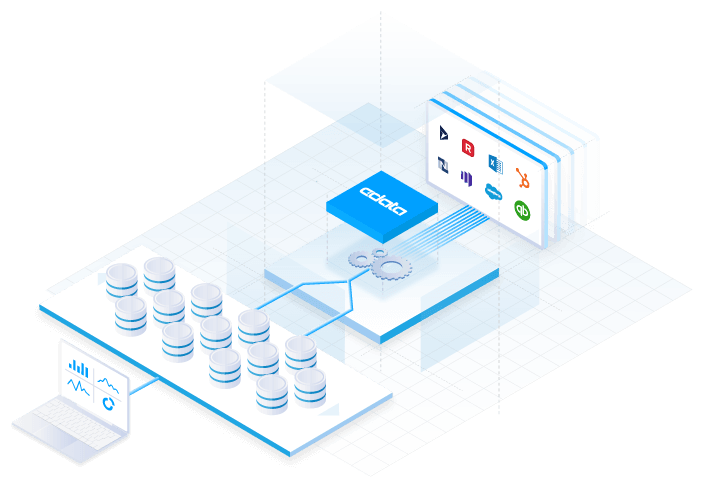Discover how a bimodal integration strategy can address the major data management challenges facing your organization today.
Get the Report →New CData Sync Clustering Boosts Pipeline Performance
Data is everywhere, and more of it is hosted in the cloud, locked behind APIs than ever before. Over 24,000 public APIs are available today, with over a thousand added each year. These APIs represent an application or data set organizations use to maintain their business and drive growth.
In a recent Productiv survey, over 60% of IT executives reported using over 100 SaaS applications at their organization, which means over 100 APIs and protocols are used to connect to and work with their organization's data. Finding value from this disparate data is an ongoing challenge, no matter the size of an organization.

One solution many companies turn to for solving data explosion challenges is data warehousing. We've written before how data warehousing enables BI and analytics across an organization, empowering teams to make the most of their data. With an organization's data consolidated, IT and data teams can build dimensional models that provide a 360-degree view of enterprise data. This enables data experts and business users to create robust reports and visualizations across an organization's data and gain valuable, actionable insights.
Introducing CData Sync Clustering
CData Sync is a lightweight application built to support data warehousing. With connections to more than 250 SaaS applications, CData Sync provides a point-and-click interface for replicating enterprise data to any database, data warehouse, or data lake.
The newly available clustering support in CData Sync offers enhanced reliability, performance, and scalability for data replication pipelines. With clustering enabled, teams can replicate data from dozens of data sources at once, easily scale replication processes as the business grows, and more - all to unlock more value from enterprise data and fuel data-driven decisions.
How Does Clustering Work?
Clustering allows sources, destinations, and replication jobs to be configured and managed on a single instance of CData Sync. With clustering enabled, when it comes time to execute the replication jobs, CData Sync will automatically distribute jobs across the cluster, allowing simultaneous execution.
To learn more about configuring Clustering in Sync, read our Knowledge Base article.
High Availability
The CData Sync clustering feature includes powerful business rules which ensure jobs always are completed. If a server in the cluster drops, the failed jobs are picked up by another server, allowing the replication job to continue automatically.High availability creates stability, reduces downtime (or avoids it altogether), ensures data quality, and enables data teams to focus on reporting and analytics without interruption or ongoing maintenance.
Load Balancing
CData Sync scales easily by adding additional installations to the cluster. Once configured, CData Sync's clustering feature distributes replication jobs across the servers in the cluster. Running multiple replication jobs simultaneously speeds up the replication process enabling more up-to-date reporting and analytics. And as a business and its data footprint grow, CData Sync can scale simultaneously, simply by adding additional systems.
Example: Salesforce Platform Replication
One CData customer, a worldwide leader in workforce recruitment, adopted multiple Salesforce products for customer experience management, including Pardot, CRM, and Marketing Cloud. Using CData Sync, they consolidated all their Salesforce data into a single warehouse for a 360-degree view of their data, building more comprehensive reports and gaining deeper insights into their customers and marketing activities. By enabling clustering in CData Sync, the organization gains faster, scalable, and more reliable replication of hundreds of types of entities (accounts, leads, opportunities, campaigns, etc.) previously siloed within the Salesforce ecosystem.
Register for our free webinar to hear CData Sync customer stories and get a demo!
Get Started Today
CData Sync enables businesses to easily replicate the entirety of their data ecosystem to any datastore, on-premises, or in the cloud. With our newest clustering feature, replication happens faster than ever before, ensuring that data tasks can scale with your business. Connect with a CData integration expert to get a demo and learn how to connect, integrate, and automate your enterprise data today.
Join our upcoming webinar on October 22nd, 2021 to hear from CData experts on how to use CData Sync and the new clustering feature to solve data challenges.
Get Started With CData Sync Today







